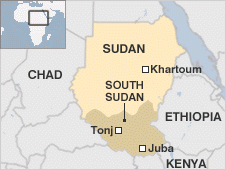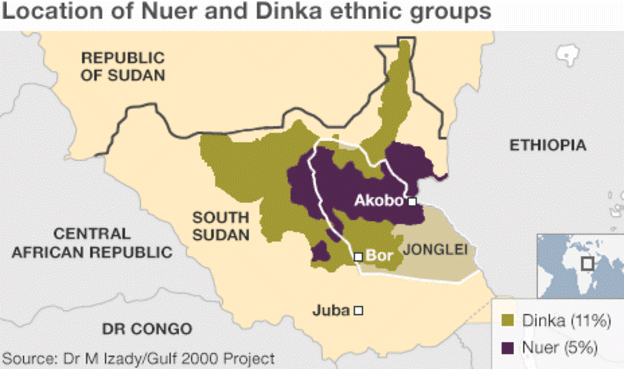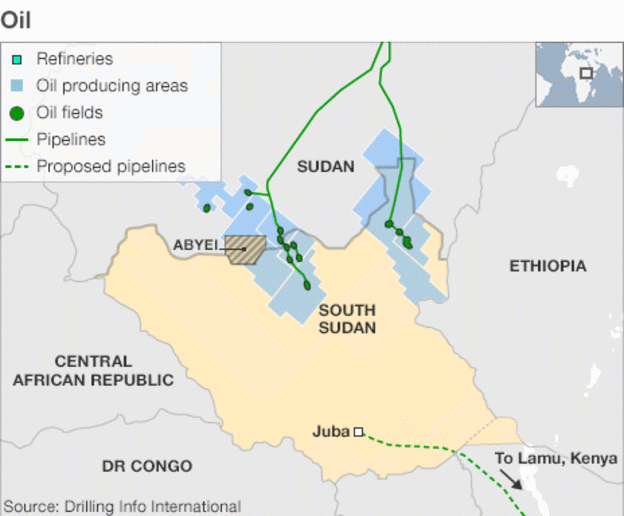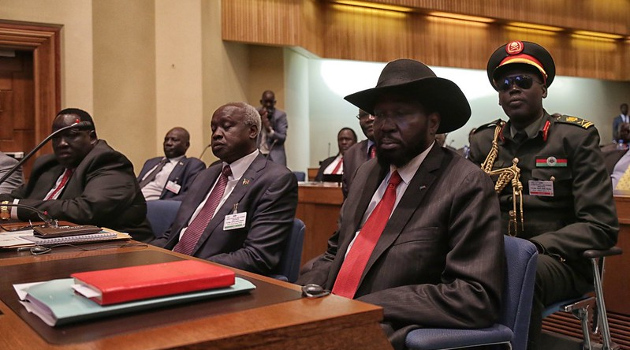Stumbling Toward Peace in South Sudan
August 2015
By Brian Garst
Executive Summary
Four years ago the world celebrated the independence of South Sudan and the role its formation was seen to play in ending decades of civil war in Sudan. Now, the world’s youngest nation is embroiled in its own burgeoning civil conflict, and the international community has again mobilized to demand peace in the region.
As they weigh in, global leaders should be mindful of the lessons learned to date and avoid ham-fisted efforts that prioritize smothering conflict over securing real stability.
Through consideration of the successes and failures of previous efforts in the region, this paper will identify where the international community may be doing more harm than good. It will further provide a critique of the current IGAD-led process, while providing guidance for how to better secure lasting peace.
Introduction
South Sudan emerged out of a long running conflict in Sudan that took place along geographic, political, and demographic lines, the latter including religious, cultural and longstanding tribal differences. Not long after the world’s youngest nation achieved independence in 2011, however, its own internal conflicts took center stage.  These conflicts concern regional and tribal representation within the central government, as well as reflect the personal ambitions of factional leaders. While not yet reaching the level of animosity and loss of life as characterized that which preceded its formation, it has nevertheless seen allegations of ethnic targeting and drawn significant international interest.
These conflicts concern regional and tribal representation within the central government, as well as reflect the personal ambitions of factional leaders. While not yet reaching the level of animosity and loss of life as characterized that which preceded its formation, it has nevertheless seen allegations of ethnic targeting and drawn significant international interest.
The Intergovernmental Authority on Development (IGAD) has taken a prominent role in the current peace efforts, and was previously involved in the mediation process that eventually led to South Sudan’s independence. However, the tactics used in the ongoing effort to impose peace on the current conflict suggests that IGAD and the international community at large have failed to learn the key lessons from their past successes and failures in the region.
Conflict Origins
Conflict began almost as soon as independence was achieved. The most serious and currently ongoing conflict was sparked by a political dispute between President Salva Kiir, of the ruling Sudan People’s Liberation Movement/Army (SPLM/A), and his former Vice President Riek Machar, after President Kiir dissolved his cabinet and dismissed Mr. Machar. The dispute quickly boiled over into open conflict between forces loyal to each side. It has been exacerbated by long running ethnic tensions, with the largest ethnic group, the Dinkas, mostly siding with President Kiir and the second largest, the Nuer, primarily siding with Mr. Machar.

Source: BBC
Tribal tensions among southern groups plagued the region prior to independence, but Dr. John Garang, then Chairman of SPLM/A, urged unity and emphasized that, “this is a rare opportunity to create greater unity of our people.”1 This honeymoon period has come to a close following the lengthy transition period and eventual independence of South Sudan.
A further complication is the presence of oil in the conflict-affected states, which provides the primary source of state revenue. Among them is Unity State, a Nuer stronghold, where Mr. Machar’s wife previously challenged incumbent Governor Taban Deng, an ally of President Kiir.2 In addition to the question of the distribution of political power, control of the revenue from oil deposits provides another challenge to the peace process.

Source: BBC
Both sides have been accused of wrongdoing during the conflict, including civilian massacres and an attack on a United Nations base. Human Rights Watch has alleged widespread commission of war crimes,3 though a much delayed report by the African Union on alleged atrocities found the situation falling short of being considered genocide.4 Estimates of death counts have varied widely, but is generally believed to be in the tens of thousands. Many more have been displaced. No less a casualty has been the unity of the country itself and the loss of national identity that is imperative to sovereign cohesion.
Lessons from South Sudan’s Formation
Sudan has been beset by conflict since it gained independence from Great Britain in 1956, most notably its two civil wars between the government in Khartoum and rebel groups from the south. In 2005, after two decades of fighting in the Second Sudanese Civil War, the Sudanese government and the SPLM/A – and with significant international participation – agreed to a Comprehensive Peace Agreement (CPA, or ‘Naivasha Agreement’) that included the sharing of power and oil revenues, and an eventual referendum on independence. In January 2011 the referendum was held with 98.8 percent of the region in support. By July the Republic of South Sudan became an independent nation.
South Sudan’s road to independence was full of detours and setbacks, with multiple stops and starts during a lengthy peace process that offers lessons and warnings for today’s efforts. The Naivasha Agreement marked the culmination of several years’ worth of negotiations and piecemeal agreements. IGAD and the broader international community were closely involved in the process, as they had been during the many failed efforts that preceded it, but ultimately its success required the participating parties to take ownership of the negotiations.
Lazaro Sumbeiywo, the IGAD mediator from 2001 to 2005, says the process taught him that to be successful “you have to get them to have ownership of the agreement and you have to build their capacity.”5 Building the capacity for the parties to develop the road-map to peace, rather than having it dictated from afar, was critical in opening the doors to negotiation. As he describes:
Both [sides] lacked capacities for mediation. I realised later that they hadn’t really conceptualised a changed position – even the SPLM, who did not believe they were going to get an agreement. The government always negotiated on their own terms and had never imagined a new dispensation. But as they went on negotiating they started realising that they actually had to change. So it was really a process and to help it we brought in more resource persons, from the World Bank, from oil-producing countries, from Australia to talk on the issues of land. I brought in nearly everybody!6
Experts were there to provide information for participants, but not to drive the process. Overall Sumbeiywo recounts a laborious process of “months of engagement,” requiring constant effort to keep the international community and outside observers “more on the periphery” because they “wanted to take over the process.”7
Before the ultimately successful CPA was reached, earlier efforts failed for varying reasons. Dr. John Young faults IGAD for a mediation that “followed Western practice and emphasised legal requirements and time-tables.”8 He also acknowledged, “While international engagement in the peace process is necessary, the mediation failed to appreciate that this engagement posed a threat to the sovereignty of Sudan and the IGAD region.” He further criticized the “narrow model which focused on ending the violence (many respondents referred to it as an extended cease-fire), instead of laying the basis for a sustainable and comprehensive peace in the south and the country at large.”
A project to devise lessons from contemporary peacemaking processes undertaken by the United Nations and Uppsala University looked at three recent efforts, including that in Sudan, and made a number of recommendations. Of particular relevance with regard to the ongoing negotiations in South Sudan is the warning against allowing the urgency created by the human cost of conflict to overwhelm the process.9 The authors also caution against allowing the international community to “overpower the peacemaking momentum.”10
These varying perspectives ultimately offer many of the same insights for future efforts: 1) Conflicts with high human costs can evoke strong interest from the international community, but while well meaning and potentially helpful, that community also presents potentially conflicting interests that must be carefully managed; 2) failure to quickly reach agreement is not always indicative of a lack of interest among the parties in resolving the conflict, but may reflect incapacities that a competent mediator can help resolve; 3) prioritizing short-term interests can come at the cost of lasting peace; 4) smaller agreements can ultimately lead to bigger ones when responsible intervention is given sufficient time to work.
Evaluating Ongoing Peace Talks
The present, ongoing process as driven by IGAD and their international partners in South Sudan’s peace talks exhibit many characteristics identified as problematic by participants in past regional negotiations and by academic analysts. Whereas the Naivasha Agreement consisted of multiple protocols agreed to separately over the course of several years, IGAD and the international community are today pushing the two sides in South Sudan to reach comprehensive agreement by an arbitrary August 17th deadline. This rigid approach limits opportunities for the parties to achieve small victories through piecemeal agreements and build trust over time. Rather than putting areas of agreement “in the bank,” it places the success of the entire effort at the mercy of whether the parties can quickly agree on the most contentious issues.
In its present iteration, the proposed agreement runs some 75 pages and addresses many and diverse areas of governance and demobilization.11 The essential element, however, concerns the sharing of power between President Kiir and Mr. Machar, who will assume the title of First Vice President. The proposed parameters of their privileges include the following:
8. Powers, Functions and Responsibilities to be exercised by the President, the First Vice President and the Vice President through consultation and mutual agreement
(…)
8.2. The following powers, functions and responsibilities shall be initiated exclusively by the President, in accordance with the TCoSS (amended 2015), and shall require the agreement of the First Vice President and the Vice President:
8.2.1. Declaration and termination of state of emergency;
8.2.2. Declaration of war;
8.3. The following powers, functions and responsibilities may be initiated by either the President or the First Vice President, and shall require the agreement
of the other:
8.3.1. Initiation of Constitutional amendments, except as provided for in Chapter I, Article 13 of this Agreement;
8.3.2. Convening, summoning and/or adjourning the Transitional National Assembly for ordinary sessions, in consultation with the Speaker of the Transitional National Assembly;
8.3.3. Initiation of legislation;
While the premise of this clause is designed to promote so-called collegial decisionmaking, the assumption of its feasibility is flawed. Allowing the President and First Vice
President to have equal footing or “veto rights” over the other is a recipe for dysfunction and could begin the erosion of democratic institutions in South Sudan. Powers of the President, such as a declaration of war or state of emergency, for example, must be agreed to by the new First Vice President. And initiation of legislation by either requires the consent of the other. It is not difficult to imagine how these powers could be manipulated to the advantage of one faction. Given that President Kiir would remain titularly the head of state and the one who must ultimately answer to constituents, it also follows that Mr. Machar would gain most from paralysis.
The dubious practicality of the agreement notwithstanding, numerous outside leaders have applied their own public pressures on the parties to “just sign,” suggesting that the process is again in danger of being taken over. United States President Barack Obama, concerned about his legacy nearing the end of his second term, warned the parties from afar that, should they not reach agreement by August 17th, “it’s going to be necessary for us to move forward with a different plan and recognize that those leaders are incapable of creating the peace that is required.”12 According to unnamed US officials, the Obama Administration’s “different plan” could include sanctions against individual leaders in the central government and among the rebels.13
The deadline-driven approach to peace assumes that conflict resolution requires nothing more than sufficiently scary threats, and ignores other necessary ingredients like trust and security, as well as strategic considerations. It also assumes that the deal is “a good one.” Depending on the disposition of the opposing sides, it might simply not be possible to achieve lasting peace at any particular moment. Attempting to force the issue under such circumstances could prove counter-productive.
Academic research on intrastate conflict does find short-term impact from intrusive mediation, but insignificant effects on long-term conflict resolution.14 The accounts from the Naivasha negotiations of mediator Sumbeiywo revealed that he was at times manipulative and intrusive in bringing the parties to the table, but also pro-active in defending the process from counter-productive meddling from outside forces. He was also well informed about the capacity needs of all participants and allowed them to work through the issues piecemeal over a period of years, all the while building trust between himself and the warring parties.
Punishment threats can also backfire under certain circumstances. Even when levied equally among the sides, sanctions have greater negative political impact against sitting government leaders than outsiders. They provide incentive among leaders to make decisions based on their personal welfare rather than the objective needs of their constituents. Beyond sanctions, general threats, significant outside pressure, and arbitrary deadlines also affect incumbent leaders disproportionately. They have the most to lose and, because of this, the pressure may embolden outside factions to delay in the hopes of a better deal. Finally, deals struck by duress have less chance of lasting and their dissolution can cause greater setbacks than any purported gains.
Peace efforts should also strive to preserve democratic gains, particularly in nascent, fragile governments. Forcing elected leaders into a potentially equal footing with rebel forces, as IGAD currently proposes, would undermine rather than support democratic processes by rewarding parties that seek political change through violence. Creating a moral hazard that encourages other ethnic groups to follow suit also could lead to balkanization rather than promoting unity.
Conclusion
The conflict in South Sudan has drawn considerable attention thanks in part to the significant political and capital investments by the international community, and particularly the United States, in creating South Sudan. The world is also acutely aware of the personal tragedies and human costs of which Sudan’s wars are capable, and cannot afford to have a failed state in an already tumultuous region.
The entire conflict has gone on for less time than the period of negotiations that eventually led to the young nation’s independence, much less the many failed efforts that
proceeded it. Nothing suggests the current conflict need last as long – particular as it lacks some of the other complicating factors, such as religious animosities, that characterized the conflict in Sudan – but peacemakers need to be open to the possibility of a lengthy process. There is already ample indication that the parties are willing to talk. They have done so multiple times prior to the current phase of negotiations.
The international community must also recognize their limitations. If the conflict remains primarily driven by political actors and competition for power and resources, peaceful resolution is possible at any time. However, it can only be reached when the demands from both sides are not mutually exclusive, otherwise conflict will continue even under great external pressure until one side has been defeated or crippled, or circumstances have otherwise forced one or both parties to reconsider their demands.
If ethnic cleavages have become a sufficient motivation to sustain the conflict in their own right, then meaningful resolution is further away. Restoration of trust and assurances of mutual security will be required and necessarily will take time to establish. Outside intervention can help in this process, but must be carefully measured so as not to exacerbate tensions or sacrifice sustainable peace for immediate results. In either case, the imposition of arbitrary, public deadlines to achieve agreement serve no purpose beyond creating self-satisfaction in the global community that something is being done.
Of another conflict, President Obama once wrote that “peace cannot be imposed from the outside; it must be negotiated directly by the leaders who are required to make the hard choices and compromises that take on history.”15 He was talking about the Israel-Palestine conflict, which itself proves the point that peace requires more than sheer force of international will. Obama and the rest of the international community should heed that same advice in South Sudan. Rather than rattling their sabers in search of an illusory peace, the international community should prioritize ensuring that a functioning, democratic state remains after the conflict is resolved in a way that promotes lasting stability.
Brian Garst is the Director of Policy and Communications for the Center for Freedom and Prosperity.
Endnotes
1. “SUDAN: Garang urges southern factions to reconcile,” IRIN, April 20, 2005. http://www.irinnews.org/report/53973/sudan-garang-urges-southern-factions-to-reconcile. ↩
2. Brian Adeba, “South Sudan: How War, Oil and Politics Fuel Controversy in South Sudan’s Unity State,” AllAfrica, August 5, 2015. http://allafrica.com/stories/201508061876.html. ↩
3. Sam Jones, “South Sudan atrocities amount to war crimes, report warns,” The Guardian, August 7, 2014. http://www.theguardian.com/global-development/2014/aug/08/south-sudan-atrocities-war-crimes-report-warns. ↩
4. John Tanza and Karin Zeitvogel, “African Union Finally Releases Report on South Sudan Atrocities,” Voice of America, July 24, 2015. http://www.voanews.com/content/south-sudan-african-union-rights-report-releasedobasanjo/2878010.html. ↩
5. “The mediator’s perspective: An interview with General Lazaro Sumbeiywo,” Accord Issue 18, Peace by piece: Addressing Sudan’s conflicts, 2006. http://www.c-r.org/accord-article/mediator%E2%80%99s-perspectiveinterview-general-lazaro-sumbeiywo. ↩
6. Ibid. ↩
7. Ibid. ↩
8. John Young, “Sudan IGAD Peace Process: An Evaluation,” Institute of Governance Studies, Simon Fraser University, Vancouver, May 30, 2007. ↩
9. Peter Wallensteen and Mikael Eriksson, “Negotiating Peace: Lessons from Three Comprehensive Peace Agreements,” Uppsala University, 24-25, http://peacemaker.un.org/sites/peacemaker.un.org/files/Negotiating%20PeaceLessonsfrom3Agreements_WallensteenEriksson2009.pdf. ↩
10. Ibid., 38. ↩
11. IGAD, Proposed Compromise Agreement on the Resolution of the Conflict in the Republic of Southern Sudan, http://www.southsudan.net/Proposed-Compromise-Agreement-S.S-24-July-2015%20(1).pdf. ↩
12. The White House, Remarks By The President And U.N. Secretary-General Ban Ki-Moon After Bilateral Meeting, 2015. https://www.whitehouse.gov/the-press-office/2015/08/04/remarks-president-and-un-secretary-general-ban-ki-moon-after-bilateral. ↩
13. Carol E. Lee, “Obama Administration Weighs New Sanctions on South Sudan Leaders,” Wall Street Journal, July 26, 2015. http://www.wsj.com/articles/obama-administration-weighs-new-sanctions-on-south-sudanleaders-1437932166. ↩
14. David Quinn, Jonathan Wilkenfeld, Pelin Eralp, Victor Asal, Theodore Mclauchlin, “Crisis managers but not conflict resolvers: Mediating ethnic intrastate conflict in Africa,” Conflict Management and Peace Science, September 2013, vol. 30, no. 4. 387-406. ↩
15. Laura Rozen, Obama writes Jewish group: “Peace cannot be imposed from the outside,” On Foreign Policy, 2010. http://www.politico.com/blogs/laurarozen/0410/Obama_writes_Jewish_group_Peace_cannot_be_imposed_from_the_outside.html. ↩
———
Image credit: UNMISS | CC BY-NC-ND 2.0.

